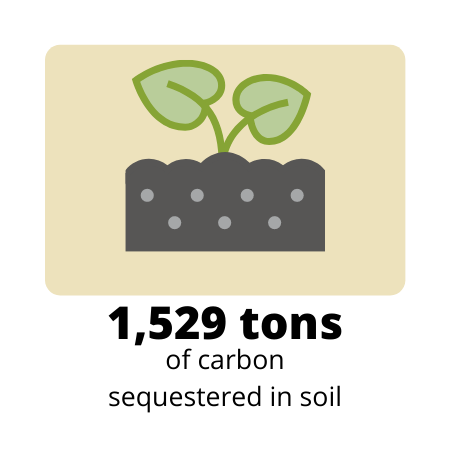Landscape Results: Carbon Sequestration
Landscape Results
Compost and mulch • Water • Construction waste • Sheet mulch • Carbon emissions • Carbon sequestration • Back to main page
Rated Landscapes in Alameda County have captured and sequestered over 1,500 tons of carbon in the soil. 
This includes carbon sequestration in the soil, not carbon sequestration in plants. (The carbon emissions reduction benefits of Rated Landscapes are here.)
To calculate carbon soil sequestration, we assumed 1.49 MTCO2E/acre-year. This metric was developed by the Marin Carbon Project and is based on research they conducted on California grasslands, which are fairly similar to the urban landscape in their management. However, since urban landscapes change more frequently, we assume the soil carbon sequestration benefits last for 10 years in urban landscapes instead of 30-year benefit assumed for grasslands.
Carbon Farming and the Compost Connection
StopWaste has long promoted the benefits of compost as a way to reduce organic waste while creating healthy soils and saving water. Now scientists are recognizing compost as a tool to fight climate change. Carbon farming refers to practices—including the application of compost—to increase the ability of soil and plants to pull carbon from the atmosphere and sequester it deep in the soil. Carbon farming also increases water-holding capacity, reduces erosion, creates healthier plants, increases forage production, and reduces costs for supplemental feed, making it one of the most cost-effective carbon capture strategies available.